
1.3 i-VTEC Manual Gearbox

Economical and efficient, the punchy 1.3 i-VTEC petrol engine features a responsive 6-speed manual transmission, and produces 102PS and 123 Nm of torque.
Superb fuel economy with CO2 emissions between 116 and 120 g/km, it's as frugal as it is enjoyable
1.3 i-VTEC Automatic Gearbox
-400x400-308w.png)
Our economical 1.3 i-VTEC engine is available with CVT (Continuously Variable Transmission) that combines the ease of an automatic with greater fuel economy and smooth power delivery.
The outstanding levels of performance are combined with low CO2 emissions, ranging between 106 and 114 g/km
Superb fuel economy with CO2 emissions between 116 and 120 g/km, it's as frugal as it is enjoyable
1.5 i-VTEC Manual Gearbox
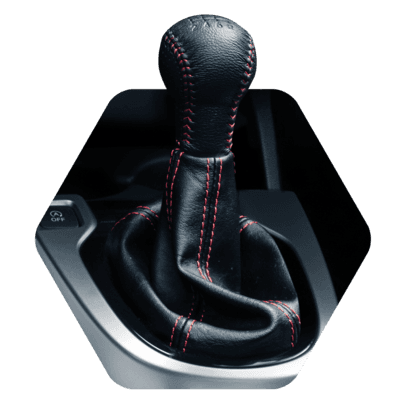
Eager and energetic, the 1.5 i-VTEC petrol engine is made for fun. It produces 130PS and 155Nm of torque and features a close-ratio, 6-speed manual transmission.
Top performance with CO2 emissions of 133 g/km, it’s a super efficient car to drive.
1.5 i-VTEC Automatic Gearbox
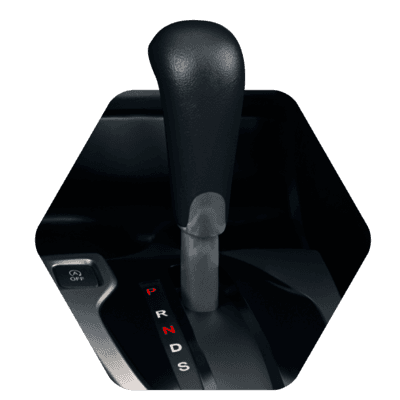
The responsive 1.5 i-VTEC engine is available with CVT (Continuously Variable Transmission) that combines the ease of an automatic with enjoyable performance and smooth power delivery.
With CO2 emissions of 124 g/km, it’s efficient as well as being easy to drive.
Automatic or manual?
A precise 6-speed manual gearbox will reward you with a spirited drive but if you prefer an automatic option, our advanced 7-speed Continuously Variable Transmission brings with it seamless gear changes, higher economy and lower emissions. You can exploit the Jazz’s sporty character by switching automatic modes and using its racing-car inspired paddle shift.
Both transmissions deliver exceptional performance and economy but the Jazz, with its Idle Stop feature, goes that little bit further. It cuts the engine when you’re waiting for the lights to change, then instantly restarts when you touch the accelerator pedal.
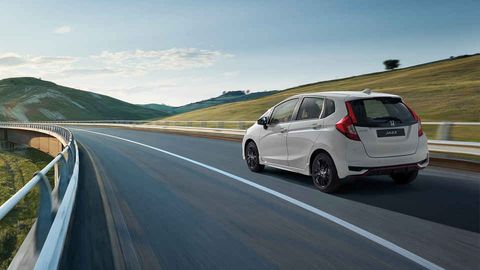
If you’re looking for an engaging drive, the Jazz’s 6-speed manual gearbox really delivers. If the mood takes you, the CVT Jazz can be every bit as sporty with its paddle shift feature giving you manual control to make track-style, quick changes.
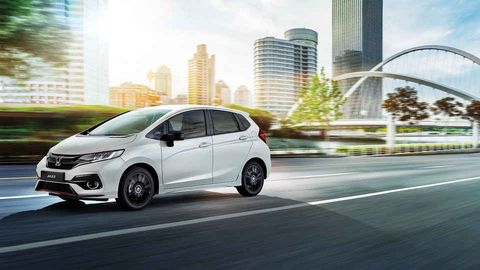
With two engines sizes and two different transmissions to choose from, the Honda Jazz is at home whether in town or on the highway.
Regardless of its size, the Jazz is really big on safety features.
The Honda Jazz was crowned the safest supermini by independent safety organisation Euro NCAP. Having already claimed the top NCAP 5-star rating, it took the prestigious Best in Class Supermini 2015 title for outstanding safety performance. Nothing’s changed there, and there’s more.
The Jazz is full of Honda’s latest technology designed to keep you, your passengers, and other road users safe.
INTELLIGENT SAFETY
Honda’s comprehensive suite of active-safety technologies known as the ‘Advanced Driver Assist System’ is available as an option on the base model and is fitted as standard on mid and upper grades. ADAS includes: Forward Collision Warning, Traffic Sign Recognition System, Intelligent Speed Limiter, Lane Departure Warning and High-beam Support System.
Forward Collision Warning
Forward Collision Warning detects the risk of collision by recognising the vehicle (car or truck) directly in front, using the multi-purpose camera. The system operates when the car is at a speed of 9mph and above. On detecting the risk of collision, it will offer visual and audible warnings. The warning distance can be adjusted to the driver’s preferences and the system can be turned off by the driver.
Traffic Sign Recognition System
Traffic Sign Recognition System uses the multi-purpose camera to detect road signs whenever the vehicle is moving forward. The system automatically recognises and displays the signs via the i-MID once the vehicle has passed the sign.
The system is designed to detect circular road signs displaying speed limits and ‘No Passing’ information. Two road signs can be displayed at any one time – the right side of the display only shows speed limit signs while the left shows ‘No Passing’ signs and speed limits with additional information; such as weather conditions, for example.
Intelligent Speed Limiter
Intelligent Speed Limiter combines two otherwise independent safety systems – Adjustable Speed Limiter and Traffic Sign Recognition system – resulting in an advanced safety assistance feature. The Adjustable Speed Limiter system –standard on every Honda car on sale in Europe – regulates the maximum speed of the vehicle at a level set by the driver.
With Intelligent Speed Limiter activated, the maximum speed of the vehicle is automatically determined by the prevailing legal speed limit detected by the Traffic Sign Recognition system. When the vehicle passes a sign indicating a lower speed limit, the vehicle will gently and automatically slow, through a reduction in power, to a maximum speed that does not exceed the speed limit. An alert sounds and the displayed speed limit blinks if the vehicle speed exceeds the limit by 2 mph or more. The vehicle’s maximum speed – regardless of the accelerator input by the driver – will not exceed this limit. When the vehicle passes a sign indicating a higher speed limit, it will allow the driver to accelerate until the vehicle reaches the new maximum permitted speed, at which point it will prevent the vehicle from exceeding the new speed limit. The system can be turned off by the driver at any time.
Lane Departure Warning
Lane Departure Warning uses the multi-purpose camera to track lane markings on the road. If the car deviates from its current lane without indicating, Lane Departure Warning alerts the driver with audible and visual warnings. The system can be turned off by the driver.
High Beam Support System
High Beam Support System works at speeds of more than 25 mph to switch High Beam head lights on/off automatically depending on oncoming/preceding vehicles (cars, trucks and motorcycles), bicycles and environmental brightness. The system can be turned off by the driver at any time.
-864x486-480w.jpg)
Traffic Sign Recognition
Traffic Sign Recognition (TSR) automatically recognises road signs and displays them via the Intelligent Multi Information Display, so you always know exactly what you’ve just passed (Available on all grades except S).
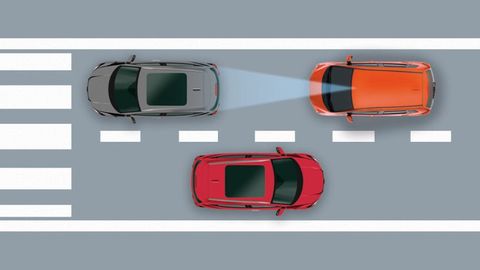
City-Brake Active System
All kinds of bumps and knocks can happen in car parks or even on your own driveway. CTBA is a laser radar system that scans ahead, automatically applying the brakes if a risk of a possible collision is detected.
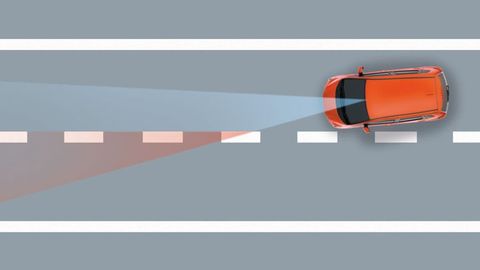
Lane Departure Warning
Lane Departure Warning detects the road markings. If the car strays from your current lane without indicating, the system alerts you with audible and visual warnings (Available on all grades except S).
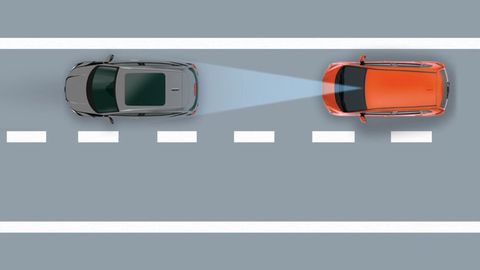
Forward Collision Warning
Forward Collision Warning detects the vechicle in front. If the system detects the possibility of a collision, audible and visual warnings will promt you to take action (Available on all grades except S).
Feel confident and secure with even more Honda safety features.
Highbeam Support System
The Highbeam Support System assesses the driving conditions around you and switches automatically between high and low beam (Available on all grades except S).
Airbags
The Jazz has been fitted with airbags all round, including curtain airbags. Known as Supplemental Restraint System (SRS), the airbags offer you greatly enhanced protection while out on the road.
Intelligent Speed Limiter
Honda’s Intelligent Speed Limiter uses information from the Traffic Sign Recognition System, and allows the driver to set a speed limit via the steering wheel control (Available on all grades except S).
Vehicle Stability Assist
The VSA sensors monitor the Jazz’s grip while you drive. To help stabilise the vehicle, it calculates the amount of power or braking-force needed for maximum control.



